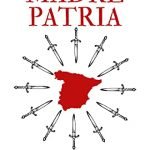
Contents
Spanish Theater in U.S. What was the first work?
The first play was a representation (theater) of Moors and Christians as they were done in Spain, in the style of those that are celebrated with great success in Alcoy. Theater and the Moors and Christians festivities brought to America
+ Hispanic Roots
Organized by Oñate (1558)
His soldiers acted as actors, some as Christians with a cross, on horseback and with spears, others as Moors with arquebuses.
Chimayo Sanctuary (New Mexico)
A celebration in Chimayo (New Mexico) that continues to be celebrated since 1558
Party with Representation of Moors and Christians
Theater in North America
Juan de Oñate organized the party and the first theater performance. And Captain Farfán was in charge of writing the play.
In New Mexico since the year 1558 on July 25 the festivities are celebrated. It began with a representation of Moors and Christians. After the festivities they were completed with bulls and comedies.
First play (1558)
Captain Farfán mounts the play and his own soldiers make his own actors
Using his comrades in arms as actors, he performs a representation of Moors and Christians. With the work you could see the power of the Spanish who came to non-believers. It was an exhibition of weapons and military power.
The performance was very successful and ended with the defeat of the Moorish side as usual. The natives became so fond of the representations that today they continue the tradition in some parts of America.
Moors and Christians
In the Valencian Community many parties of this style are celebrated. One of the most famous is in Alcoy. In the style of these festivities in Alcoy, the theater performance was performed
Popular parties with costumes that are authentic period costumes. They remind us of historical events that occurred in these lands. An adaptation of these festivals that carried a message of tradition and display of weapons.
First parties
The first festivals in imitation of those of Moros y Cristianos were held in Chimayo, 5 km from Santa Fe. They soon spread to other towns in the area, in which it became customary to perform the representation every year. Currently it is only celebrated in Chimayo, on June 25.
For the natives to see a performance with so many characters and so well armed was quite a spectacle. In this work the Spaniards took the opportunity to demonstrate their military skills and their powerful weapons.
The Moorish side was on foot and equipped with arquebuses. The Christian side on horseback with spears and shields. In the work you could see the power of firearms far superior to traditional ones. Weapons that only the Spanish possessed and knew how to handle, being well trained.
Comanches in theater
Another play, a variant, was the so-called theater performance of the Comanches. It was based on real events that occurred as early as the 18th century.
Comanches besieged the populations of New Mexico. With this they tried to seize everything they could even if they had a preference for horses. Skilled horsemen needed them for themselves and to sell to the French for weapons.
In the play, the Green Crow chief, who had a lot of prestige among his own and among other tribes, was one of the protagonists. In real history he had several victories but finally the Spanish sent the Cuera Dragons and they managed to corner him. Along with many of his people he died, and the Comanches along with the other tribes made peace.
Some parties that last
They have continued to be celebrated for more than 400 years. Theater and similar festivals exist in Peru and Guatemala
These first festivals took root and continue to be celebrated for more than 400 years in different countries of America. The theme of the first representation in North America is not surprising, since the Spanish reconquest was only a few decades away.
These festivals also had a didactic fund for the indigenous people of the area. In them they contemplated the enormous power of the Spanish troops that already caused the defeat and surrender of the Muslim infidels. It was easy for them to use the moral.


